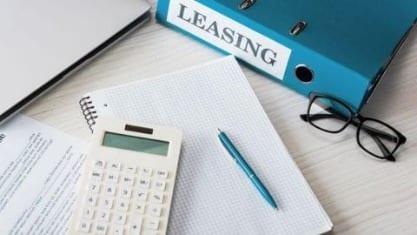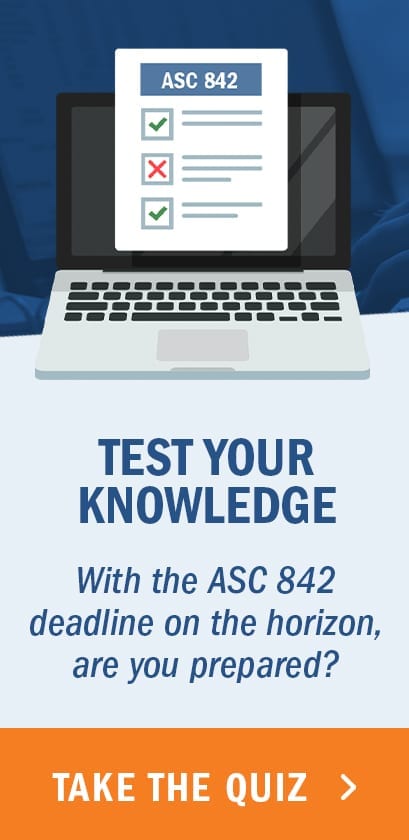The process of implementing the new lease accounting rules requires a lot of time and resources to reach proper compliance. Many public companies underestimated the complexities of the entire transition process, and once completed, 67% of these companies confirmed the difficulty. In order to transition smoothly and comply with the new lease accounting standards, there are a few things you must remember.
Lease accounting compliance is crucial for your organization
Depending on the size of your company, the lease accounting transition process often takes months to over a year to fully implement. In that time, you must:
- Identify potential leasing arrangements throughout the organization
- Collect all lease contracts
- Extract all of the terms needed to value lease assets and obligations that will be recognized on the balance sheet
- Evaluate, purchase, and implement software to make the complex calculations more efficient and accurate
Once all of these phases are complete, then numerous lease terms and information must be entered into the software and checked for accuracy – all while continuing day-to-day tasks. Allowing your entity enough time to comply with the standard will save money and resources, and reduce the stress of completing this project against a tight deadline.
In addition to being proactive with your lease accounting, doing these five things will help ensure compliance.
1) Understand the lease accounting standards
There are several key differences between each of the new standards and their previous iterations. Balance sheet recognition of operating leases, lease classification criteria, and short term lease accounting are all affected by the new lease accounting standards. Whether a company chooses to utilize practical expedients also impacts the time and complexity to implement the standards. Without an upfront, solid understanding of the changes, compliance under ASC 842, IFRS 16, or GASB 87 will be even more challenging.
LeaseQuery and our team of lease accounting experts can help with education on the lease accounting standards. Our website has multiple articles that discuss many of the aspects of the various accounting standards as well as free tools to help make determinations regarding specific points within the lease accounting guidance.
2) Utilize your resources
As aforementioned, depending on the company size, the average lease accounting transition takes several months to complete. As you start your project, it is important to understand the steps necessary for compliance, the first being to establish a lease accounting implementation team.
For many companies, the accounting department must transition successfully to the new lease accounting rules along with handling closing activities, financial reporting, and many other day-to-day accounting responsibilities. It’s important to assess available resources against the needs of the organization and remember to consider the necessary team members from the legal, purchasing, and IT departments for this task.
Finally, appoint a lease accounting transition team leader. This person will be responsible for creating an internal process for lease accounting implementation including how the lease compliance software is utilized, who has access, and who will be the point of contact for your software’s support staff.
3) Gather a full scope of your leases
Compiling all lease information in one place can be difficult for companies that have many subsidiaries, lease many different types of assets, and/or have a large number of existing operating leases. Identifying your entire lease portfolio significantly ahead of your actual lease transition date will allow enough time for the team to make determinations regarding accounting policy elections—both in reference to the practical expedients in the guidance and also regarding company policies that must be determined during the software installation phase.
One way to quickly compile your leases is to reach out to various departments within the organization and request they provide all lease documents currently managed by their department. This includes identifying embedded leases at your organization.
After gathering a complete population of leases, the next step is to extract the numerous lease details and input or upload the information for each contract into your software. This will allow the software to seamlessly create the transition and on-going journal entries.
While it’s important to determine the contracts for your population, it’s also equally important to determine as a company if there are any lease agreements that can be excluded. For example, under IFRS 16, assets with a fair value of under $5,000 are exempt from the new standard. While the other guidance doesn’t have a specific materiality threshold, GASB 87 indicates that a company need not account for immaterial arrangements, and a company can use the materiality concept within FASB accounting pronouncements to implement a capitalization threshold to exclude immaterial leases.
4) Look out for errors within your leases
Under the previous standards, given the financial statement treatment for service contracts and operating leases was similar, not all leases were appropriately identified. Additionally, provisions that result in capital lease treatment may not have been identified. ASC 842 provides a practical expedient, which allows for keeping current classification of leases under old rules. However, you cannot grandfather in misclassified leases under the previous lease rules. You must correct those leases first, then transition.
Another common error is that a company may not appropriately account for deferred or prepaid rent upon transition. When prepping your leases for adoption, to facilitate your transition entries, ensure that any deferred or prepaid rent amounts have been appropriately reflected under the prior guidance and recorded on the balance sheet.
5) Conduct due diligence in selecting your software solution
There are several things to consider when looking for a new lease accounting solution. The first step is to get buy-in from management who may be hesitant to invest in software. By letting them know the benefits of a compliant lease accounting software over using Excel, the organization can begin its journey toward a new software solution.
Don’t rush when trying to find accounting software for your organization. It can take a few weeks to several months to procure the software and sometimes even longer to implement the solution. Only then can you begin to enter the necessary lease information into the software.
Once your team has agreed to utilize a solution, it’s important to consider the software’s features, functionality, and accuracy to see if it is the right fit for your organization. You may find there are some essential and non-essential features based on your company’s needs, but here are two factors to consider that are absolutely essential:
Accurate accounting
LeaseQuery is engineered to perform lease accounting calculations in the way that the standards say they should be performed. Can the same be said about every lease accounting system? Make sure to ask questions of providers about how their system performs certain essential calculations. This allows you to determine if the software may put you at risk of noncompliance.
A knowledgeable support staff
Is the provider’s staff well-versed in the standard applicable to your organization? If so, this should be fairly easy to confirm during a demonstration. Do their accountants understand how the system performs certain calculations? Do their product specialists understand why the system must perform the calculations in the way that the standards dictate? Without a support staff that understands both the correct accounting and how the system implements those calculations, you have to double check the work that is coming from your solution. And that isn’t a time saver.
What non-compliance could mean for your organization
Not complying with the new lease accounting standards correctly and on time could put your organization in a bad position. Not only is a clean audit opinion at significant risk, but you may also be forced to restate your financial statements. It is important to give the utmost attention to this project, not only to achieve compliance by the deadline, but on day two and beyond.
To learn more about ensuring your organization is compliant in time for the transition deadline, schedule a demo today.




